Porsche Panamera 2017 Owner's Manual

The new Panamera
Courage changes everything

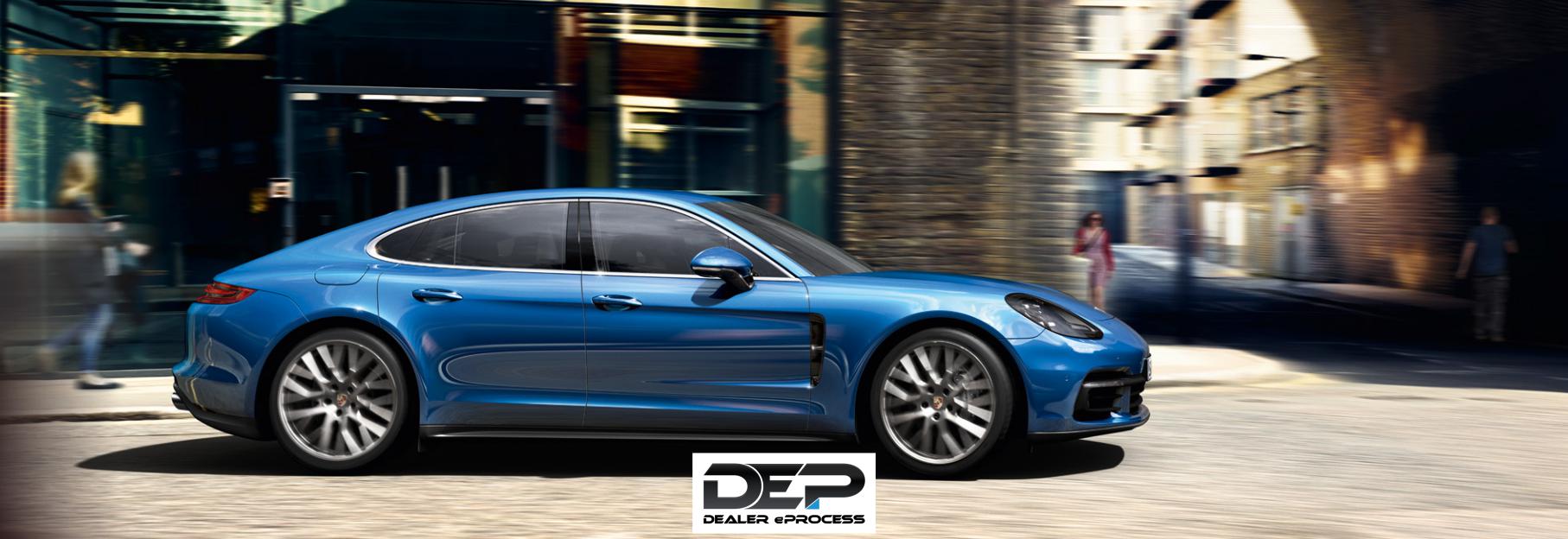
Sports car fascination |
6 |
Panamera concept |
10 |
Design |
20 |
Drive and chassis |
30 |
Environment |
52 |
Comfort and infotainment |
54 |
Porsche Connect |
74 |
Lights and vision |
80 |
Assistance systems |
82 |
Personalisation |
92 |
Porsche Exclusive |
96 |
Porsche World |
134 |
Technical data |
136 |
Index |
140 |
|
|
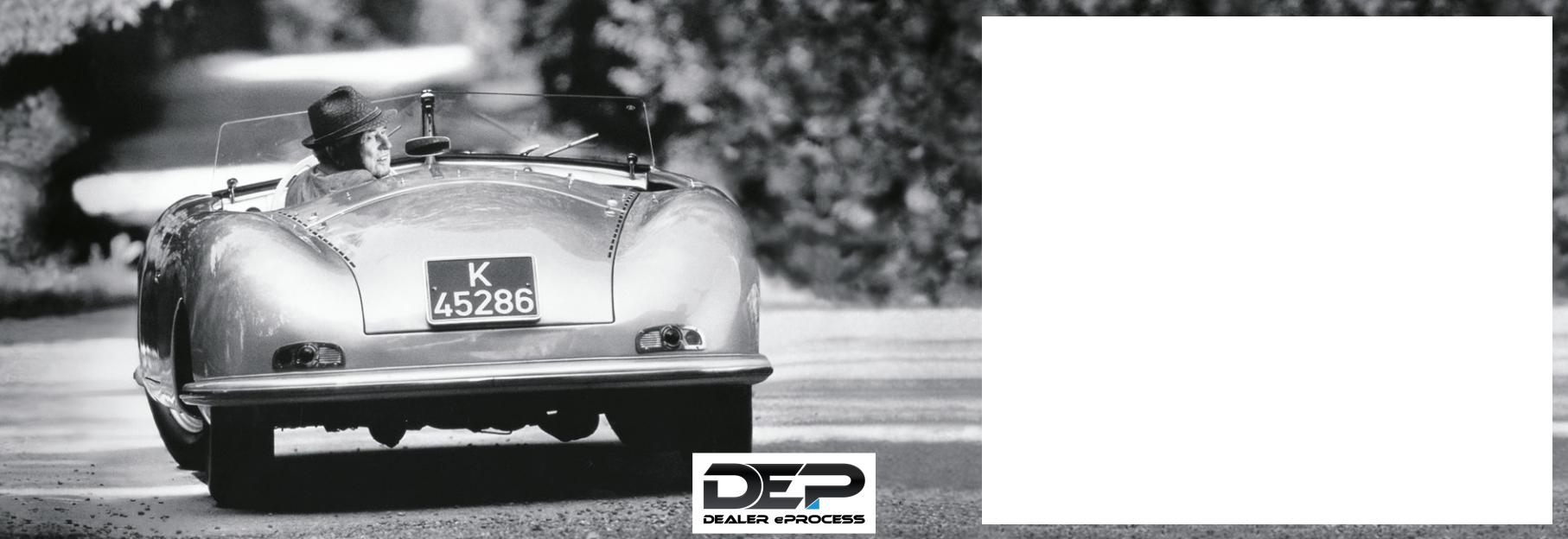
“In the beginning I looked around and could not find quite the car I dreamed of. So I decided to build it myself.”
The dream of the sports car.
A big dream has to be fought for. And so does a bold vision. The next victory? Rarely does it simply fall into our lap. Often, there are innate factors we must compete against first: resistance, conventions and rigid patterns of thinking.
Whatever we put our heart and soul into, nothing is achieved without passion, grit and determination. Ferry Porsche gave everything for the sports car of his dreams. His dream came true. Not because he hesitated, dwelled or got lucky, but because he went that extra mile.
To us, it’s never been about extra horsepower alone, but about more ideas per hp. It’s about engines that are more efficient, not bigger. It’s about a design that follows principles, not trends. It’s about sports cars that can be driven day in, day out.
It’s only when all these things come together that we can talk of Intelligent Performance – the core of the Porsche brand, and of its future. This is what we are fighting for. Just as we did on day one. We are fighting for a dream that will forever be in our heart.
Sports car fascination 7
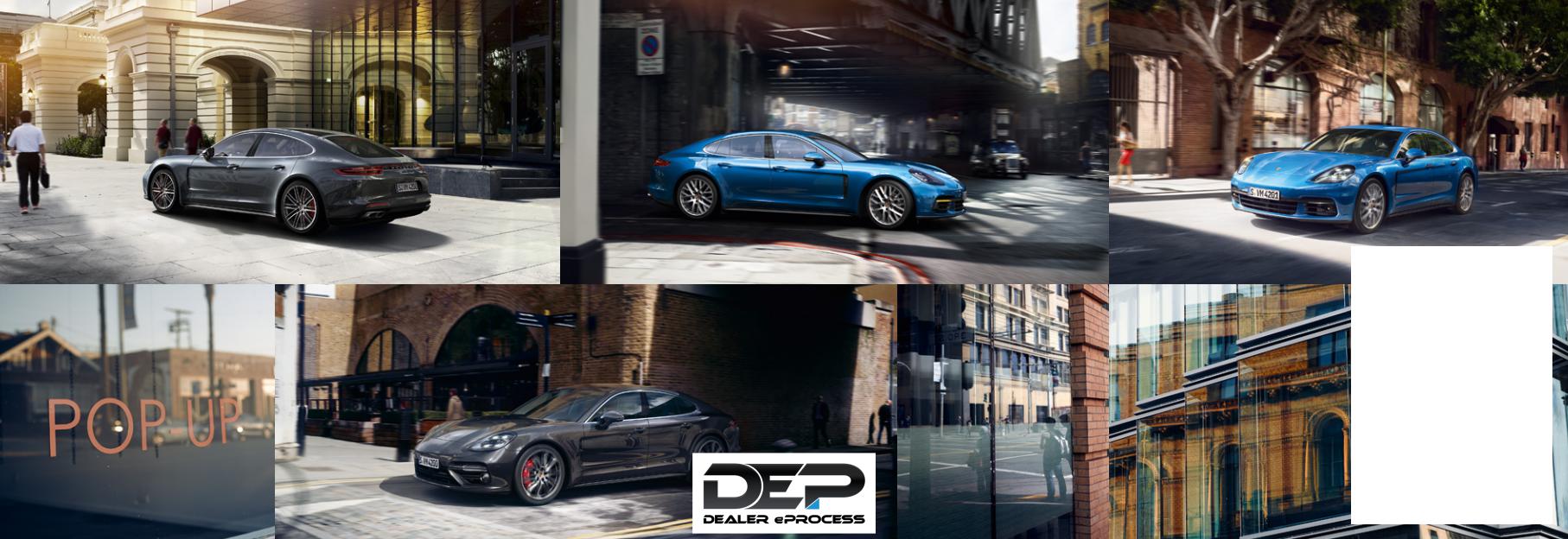
Courage changes everything.
Founding a company. Not simply continuing down the chosen path, but forever reinventing oneself along the way. Doing things differently from others. All this takes courage. Courage that breaks with conventions, draws a clear line, and creates the future. In Los Angeles, London, Berlin, Singapore – and in Zuffenhausen. Without courage, nothing would be different from yesterday.
Porsche would not be Porsche. And you would not be you.
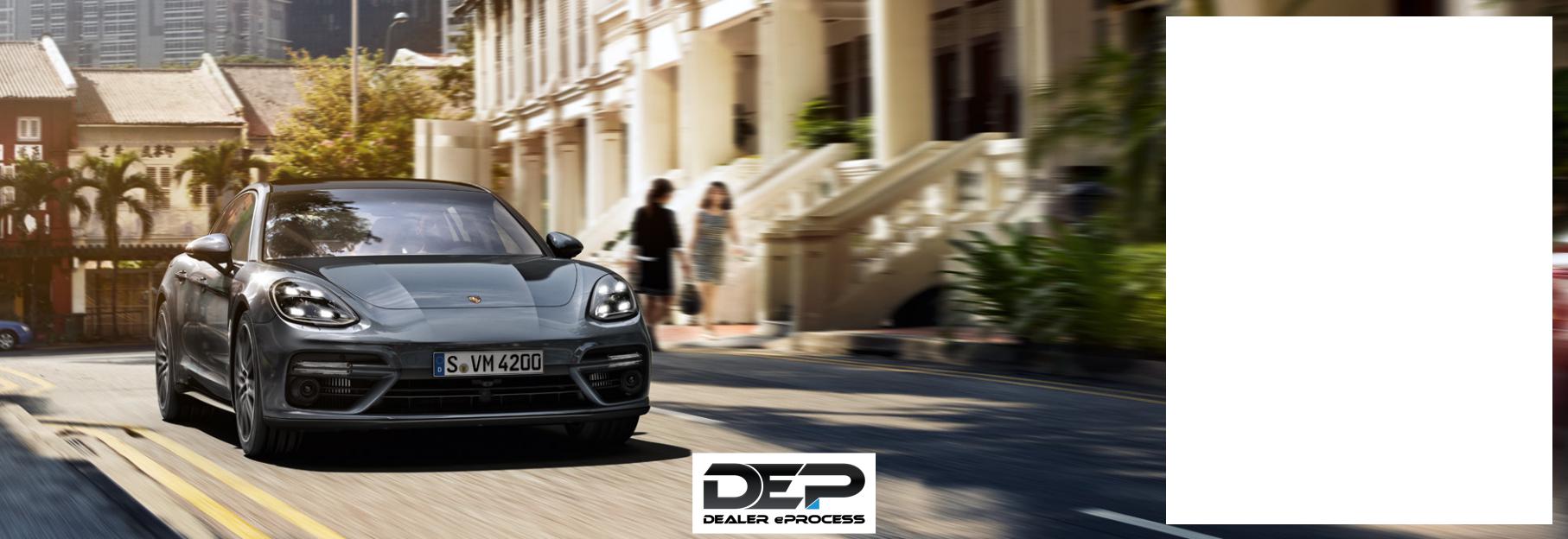
A vision is only ever as courageous as those who make it a reality.
Panamera concept.
A few years ago, everything to do with the saloon suddenly changed. Large, cumbersome and thickly padded instantly seemed outmoded qualities. On the road, something happened – something rather fast and dynamic: a sports car came along. A sports car with four seats, an unmistakable silhouette and performance figures normally associated only with a
Porsche.
The Panamera. It changed everything. For drivers of saloons first and foremost. Sporting spirit – in business and in personal life – found its automotive counterpart. The courage to perform found a matching performer.
Now the change continues. Forwards. On the road, something is happening again. For sporty drivers – and their sporty companions – our engineers and designers have created the next Panamera. With the courage of a new generation.
The new Panamera.
Courage changes everything.
Panamera concept 11
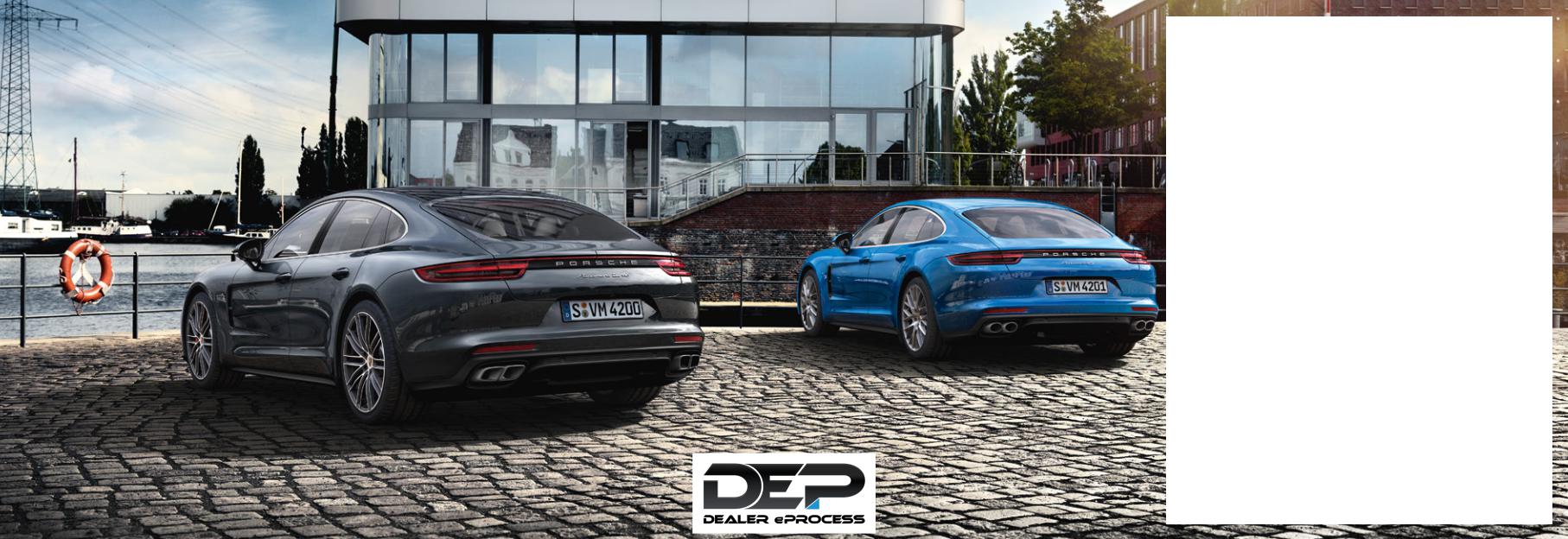
Our engineers have demonstrated their courage with the Panamera concept. By continually re-evaluating and reinventing. By reconciling apparent contradictions: performance and comfort, dynamics and efficiency, career and family. And by forever remaining true to our roots, with shared traits like the ignition lock on the left and the rev counter in the middle – in short: typical Porsche DNA. The result? Singularity. Of the Porsche kind.
The new generation of the Panamera sees two models lining up on the grid: the Panamera 4S with a 2.9-litre twinturbo V6 engine offering 324 kW (440 hp) and the Panamera Turbo with a 4.0-litre twin-turbo V8 engine producing 404 kW (550 hp).
And it’s more dynamic than ever: thanks to Porsche Dynamic Chassis Control Sport (PDCC Sport), Porsche 4D Chassis Control, three-chamber air suspension and – for the first time in the Panamera – rear-axle steering.
New Porsche InnoDrive and other innovative assistance systems make driving not only safer, more efficient and more relaxing – but also more enthralling. Typically Porsche.
And because a Porsche is always heading in the direction of the future, the new Panamera models are fully digitally networked thanks to Porsche Connect.
The route is illuminated by LED main headlights – fitted to all new Panamera models. New LED main headlights with matrix beam including Porsche Dynamic Light System Plus (PDLS Plus) are available as an option.
For fuel consumption, CO2 emissions and efficiency class, please refer to page 137.
Panamera concept 13

Singapore – Panamera Turbo

San Francisco – Panamera 4S
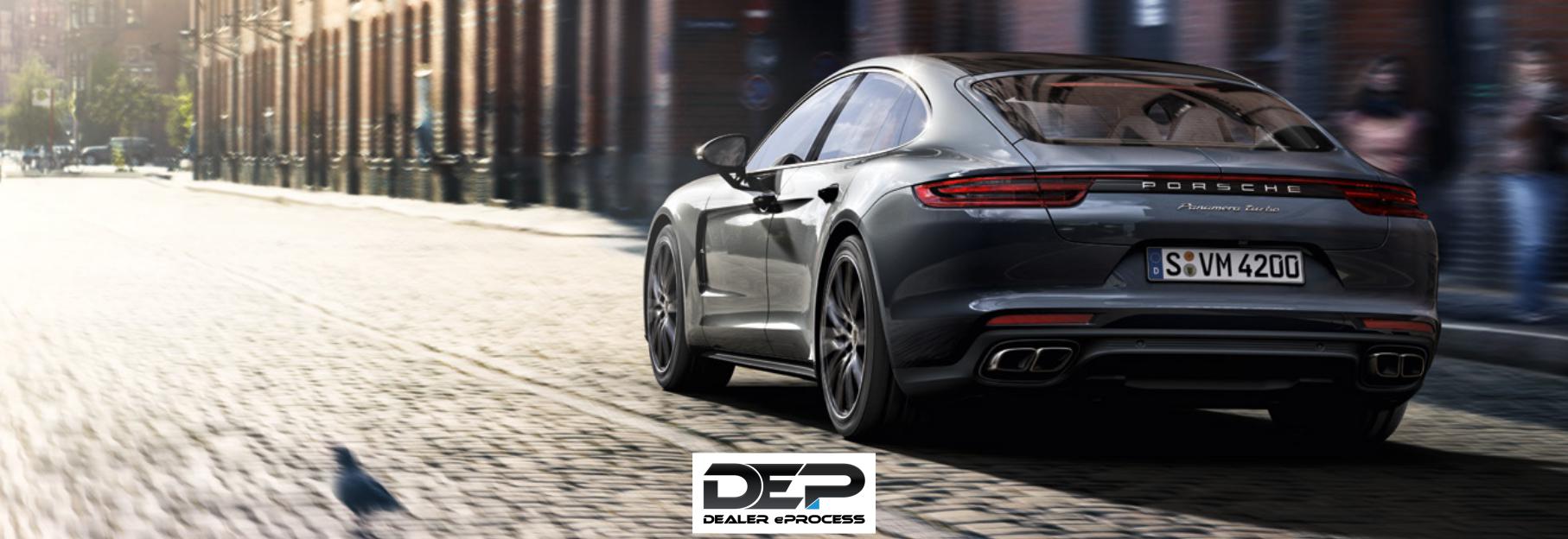
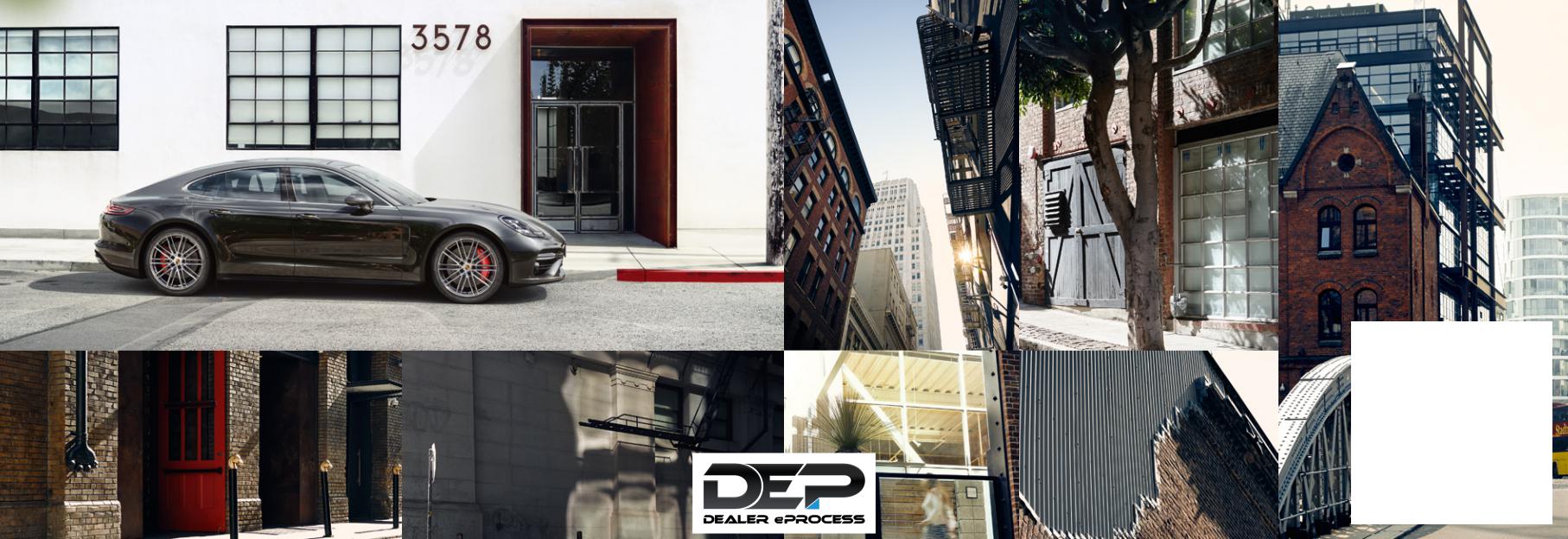
Design.
Hardly anything takes more courage than change. Saying “And yet ...”, even though the status quo does in fact work as it is. Cultivating one’s own style, even though it would be easier to flow with the mainstream. But you can’t follow a clear line unless it’s your own – and sharpen it time and time again.

Courage takes many forms.
We’ve opted for that of a sports car.
Design.
Does a sporty saloon really have to look like a saloon? Or can it look rather more athletic? With a taut roof line, for example, that displays a sleek and harmonious contour more likely to be associated with a two-seater?
The silhouette and proportions of the new Panamera models are more Porsche than ever. Clearly perceived rounded transitions, powerful muscles and a sharpened sports car silhouette emphasise the precision of the new design.
The wheelbase is 3 cm longer than that of the predecessor – the shorter overhang at the front and the longer overhang at the rear lend visual dynamism. The more prominent sculpting of the side creates the customary Porsche waistline and sense of lightness.
A stunning identifying feature at the front: LED main headlights with four-point daytime running lights, including Porsche Dynamic Light System (PDLS) on the Panamera Turbo.
22 Design
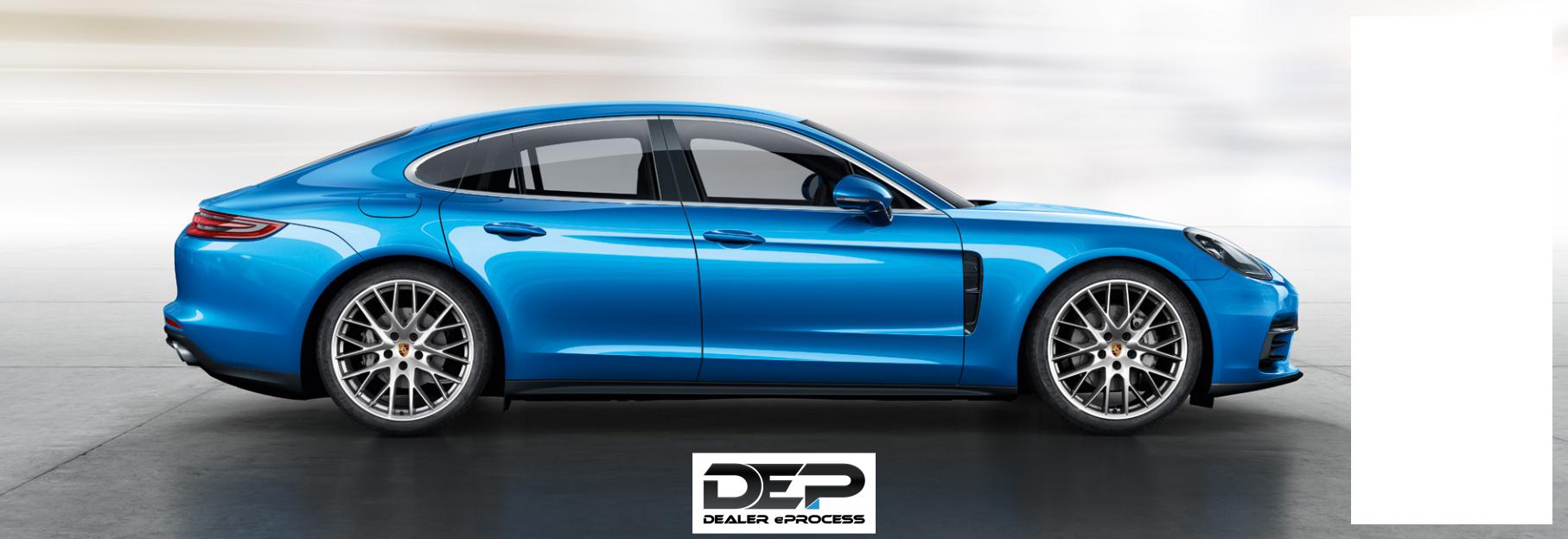
The tremendous tractive force of the all-wheel drive S model is transmitted to the road by 19-inch Panamera S wheels. Wheels of up to 21 inches in size are available as an option. Behind them: brake calipers in Titanium Grey. Round twin tailpipes are fitted left and right.
Characteristic features of all Panamera models: the light strip on the rear end and the slimline three-dimensional LED taillights with four-point brake lights. The extending rear spoiler integrated into the body reduces lift at the rear axle at high speeds.
Design 25

The new Panamera Turbo aims once more to explore the extremes of feasibility. An ambition that’s obvious at first glance: from the dominant front end and characteristic front light units, and from the side air outlets in the front wings finished in the exterior colour of the vehicle. The twin tailpipes are specific to the Turbo, the brake calipers behind the 20-inch Panamera Turbo wheels are finished in red. The rear spoiler of the Panamera Turbo splits at full deployment for a significant gain in width – commensurate with the higher power output of this model.
Design 27
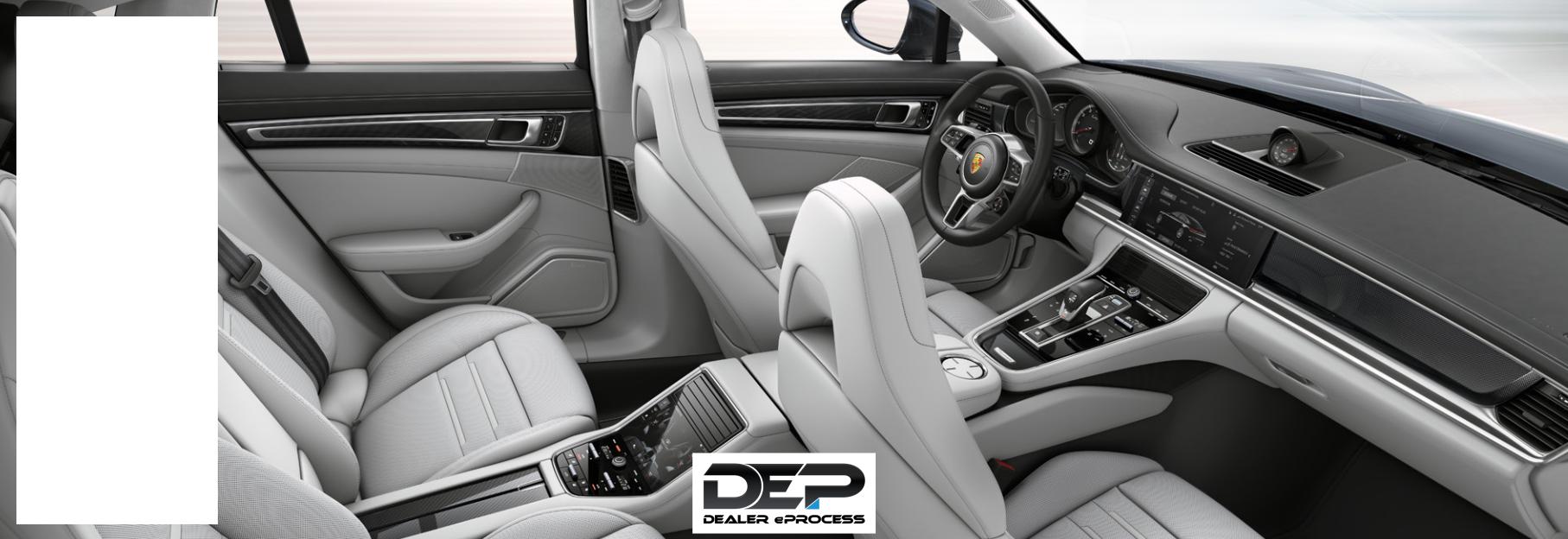
The interior has been completely restyled – and nevertheless remains typically Porsche. The centre console ascends towards the front. The dashboard is flat and conspicuously wide. The analogue rev counter is positioned in the middle
of the instrument cluster.
Also new is the control concept: Porsche Advanced Cockpit. The centre console with Direct Touch Control has a surface in glass look featuring touch-sensitive buttons for direct access to the most important functions. In between: the compact gear selector. A high-resolution 12-inch touchscreen display is integrated into the dashboard. In conjunction with optional four-zone automatic climate control, the passengers in the rear also have a touchscreen display of their own. Two high-resolution screens, one to the right and one to left of the rev counter, display virtual instruments, maps and a range of other information.
Above all, though, there is plenty of space and comfort. Not so typical of a sports car. Absolutely typical of the new Panamera.
28 Design

Drive and chassis.
Knowing the right moment to make the big decisions in life is one thing. But it’s another thing entirely to act in this very same moment. To do so with complete commitment. Without hesitation. Without wavering. It all takes heart – and a firm stance.
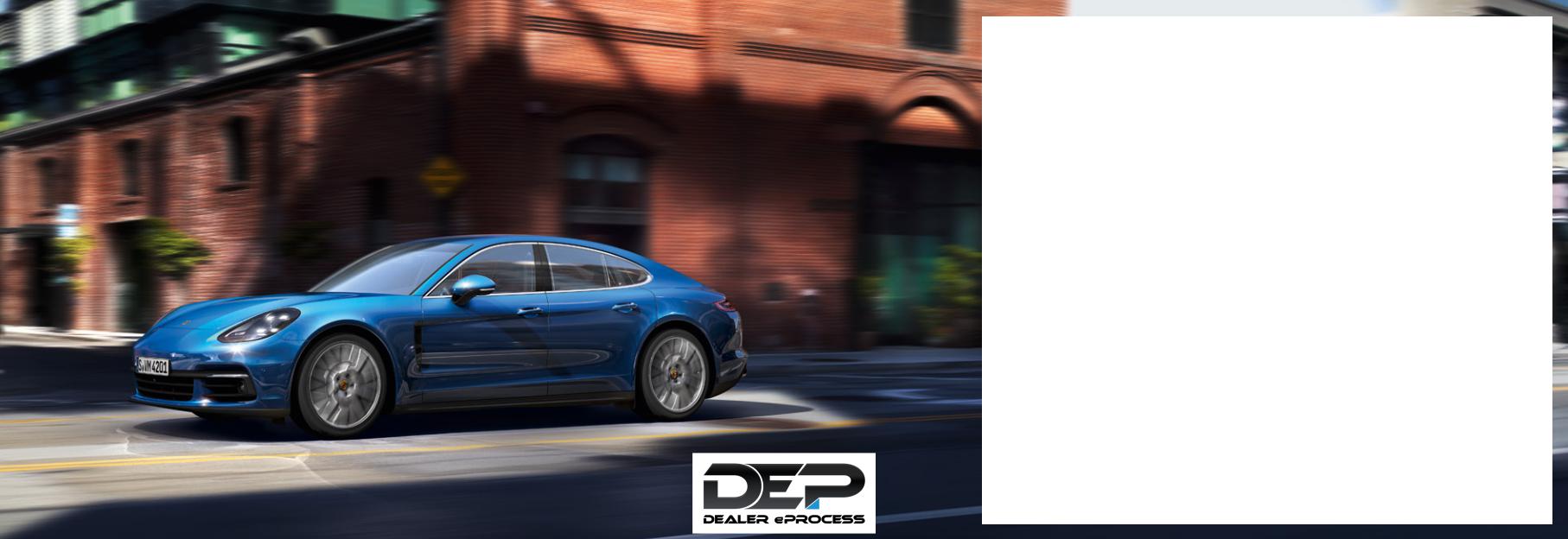
Whether it’s in the office, at home or on the road: change needs force.
Engines.
“That’s the way we’ve always done it.” Not really a sentence to inspire change. Except at Porsche. That’s because we’ve always made each new generation of engines higher-performing, more dynamic and more efficient than the last. The new engine generation of the Panamera models now takes the next significant step forwards.
The all-new twin-turbo V6 engine in the Panamera 4S and twin-turbo V8 engine in the Panamera Turbo are lighter and more compact than their predecessors and come equipped with VarioCam Plus. Their two turbochargers are now positioned in between the cylinder banks. This reduces the distance that the exhaust stream has to travel to reach the respective turbo – delivering a more rapid response.
The twin-turbo V8 engine of the Panamera Turbo is equipped with twinscroll turbines. The exhaust streams arrive at the turbine wheel through physically separate channels – for optimised gas cycles. The result: high torque even in the low rpm range.
The adaptive cylinder control of the twinturbo V8 engine activates cylinders on demand. An example: you’re driving in town and have little need for power, your car will now operate on only four cylinders instead of eight. Once you demand greater power output again, all cylinders will immediately be reactivated.
The direct fuel injection in the new generation of engines is realised by a central injector inside the combustion
chamber. This optimises both the mixture injection and combustion – for greater efficiency and increased power delivery.
On the subject of high efficiency: all engines are purposefully equipped with electrical system recuperation, thermal management, auto start/stop with coasting function and active air intake flaps. And driving pleasure?
Greater than ever.
For fuel consumption, CO2 emissions and efficiency class, please refer to page 137.
Drive and chassis 33

The 4.0-litre twin-turbo V8 engine in the Panamera Turbo.
With a power output of 404 kW (550 hp), the new 4.0-litre twin-turbo V8 engine featuring twin-scroll turbochargers, VarioCam Plus and adaptive cylinder control produces 22 kW (30 hp) more than the engine in the predecessor model
– despite a reduction in fuel consumption. The maximum torque of 770 Nm is achieved between 1,960 and 4,500 rpm. The sprint from 0 to 100 km/h takes just 3.8 seconds. Top speed is 306 km/h.
The 2.9-litre twin-turbo V6 engine in the Panamera 4S.
The newly developed 2.9-litre twin-turbo V6 engine produces 324 kW (440 hp), which makes it 15 kW (20 hp) more powerful than its counterpart in the predecessor model. Fuel consumption has been reduced. Maximum torque is 550 Nm at 1,750–5,500 rpm. This means that the new Panamera 4S accelerates from
0 to 100 km/h in 4.4 seconds and reaches a top speed of 289 km/h.
For fuel consumption, CO2 emissions and efficiency class, please refer to page 137.
34 Drive and chassis |
4.0-litre twin-turbo V8 engine |
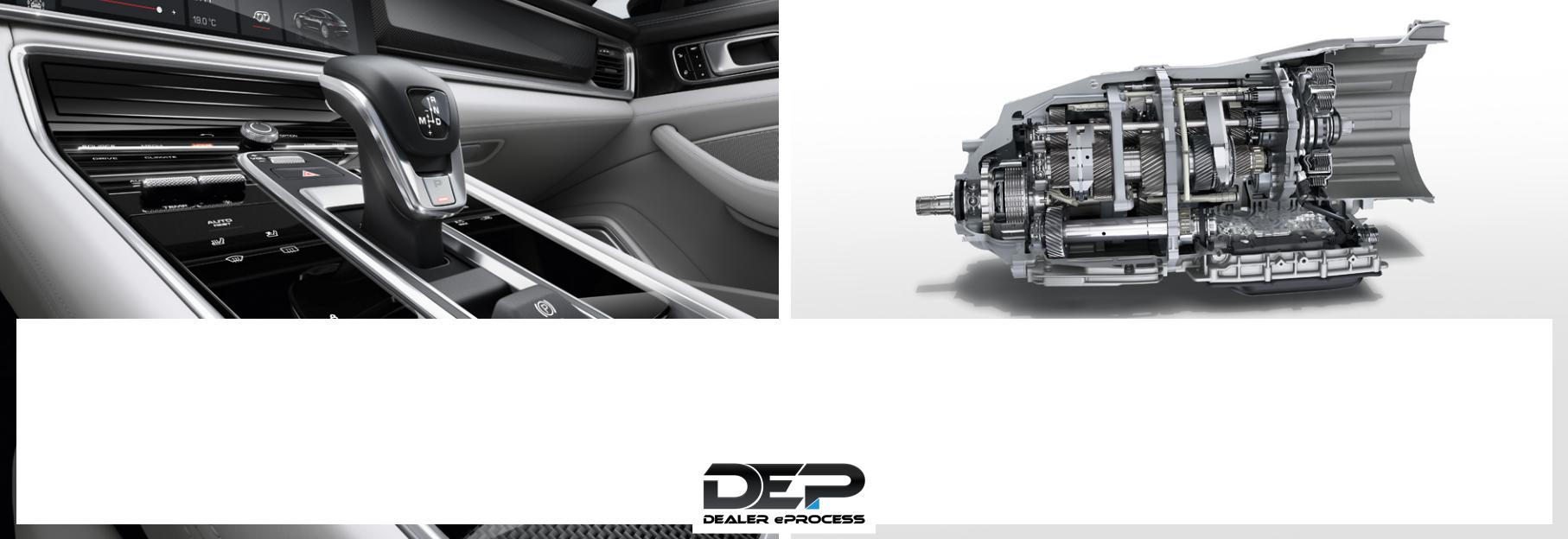
Those who want power must not only demand it, they must also pass it on.
Transmission.
New 8-speed Porsche Doppelkupplung (PDK).
Getting more power from an engine is worthwhile only when you know where it needs to go. And how quickly and effectively. The latest Panamera models are therefore equipped with a newly
developed 8-speed Porsche Doppelkupplung (PDK), which translates the tremendous drive force of the respective engine into the acceleration expected of a sports car.
Gears 1 to 6 have a sports ratio and top speed is reached in 6th gear. 7th and 8th gear have a long ratio, which helps to keep engine revs low even at high road speeds – for efficient and comfortable driving over long distances. The precise gearshifts take place in milliseconds
interruption in the flow you would expect of a
36 Drive and chassis |
Drive and chassis 37 |
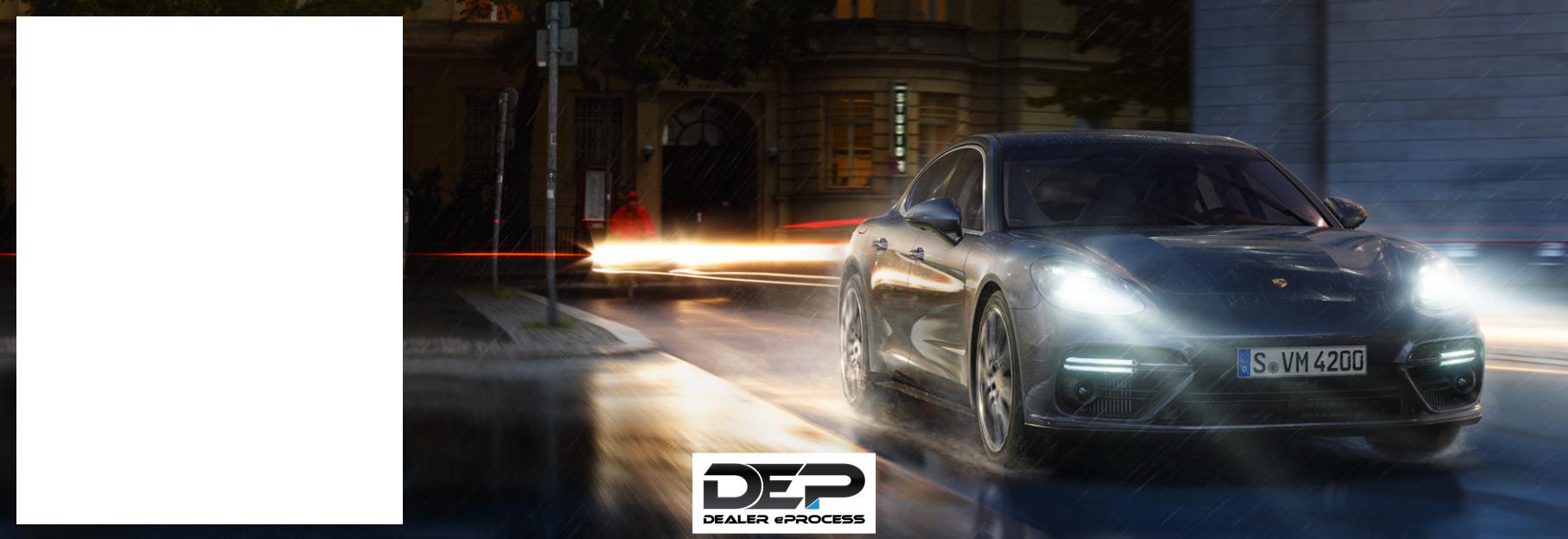
Porsche Traction Management (PTM) all-wheel drive.
All Panamera models are equipped with Porsche Traction Management (PTM). This active all-wheel drive with electronic and map-controlled multi-plate clutch ensures the optimum distribution of drive force whatever the driving situation – for excellent acceleration power on long straights, through tight corners and on road surfaces with varying grip.
The multi-plate clutch regulates the distribution of drive force between the rear axle and the front axle. Driving conditions are constantly monitored, enabling the system to respond to a variety of situations. Sensors check, among other variables, the rotation speeds of all four wheels, the longitudinal and lateral acceleration of the vehicle,
and the steering angle. If the rear wheels threaten to spin under acceleration,
a greater proportion of drive force is distributed to the front by a more powerful engagement of the multi-plate clutch.
38 Drive and chassis
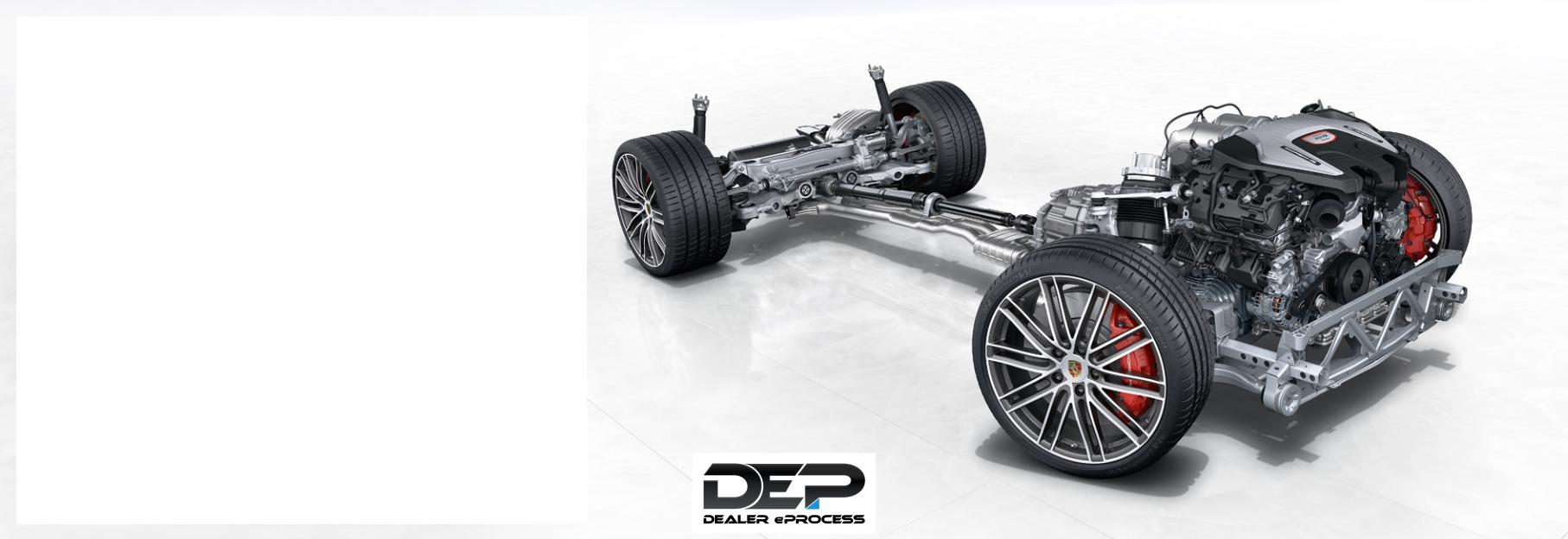
The main thing is you follow your own path. But in a consistent way.
Chassis.
Whether you’re behind the wheel or occupying a passenger seat in the front or rear: in a Porsche, every drive should feel like sport, not transport. With comfort, not cosy cuddles.
The chassis of the new Panamera models performs this balancing act between sport and comfort effortlessly – and in the most masterful way possible: with further-developed, optional chassis technologies. Examples include the adaptive air suspension with threechamber technology boasting a 60 % greater air capacity than that of the predecessor, new Porsche Dynamic Chassis Control Sport (PDCC Sport) and rear-axle steering. What’s also new is the integrated Porsche 4D Chassis Control
system, which centrally analyses the driving situation in all three spatial dimensions, e. g. pitch, roll and yaw, computes optimum driving states from these data, and synchronises all chassis systems in real time: the fourth dimension. The objective is to optimise overall performance, and to make the middle ground between sporty driving and comfort as expansive as possible.
Rear-axle steering.
Available for the Panamera models for the first time: optional rear-axle steering. It enhances performance and everyday driveability in equal measure.
During low-speed manoeuvres, the system steers the rear wheels in the
opposite direction to that of the front wheels. This has the virtual effect of shortening the wheelbase. The turning circle is reduced, agility is increased and parking becomes noticeably easier to manage.
During high-speed manoeuvres, the system steers the rear wheels in the same direction as that of the front wheels. This virtual extension of the wheelbase increases driving stability.
Rear-axle steering makes it clear that there is no contradiction between stability and agility or performance and everyday driveability. The result: greater manoeuvrability and driving safety in everyday use – and a significant increase in maximum driving performance.
40 Drive and chassis
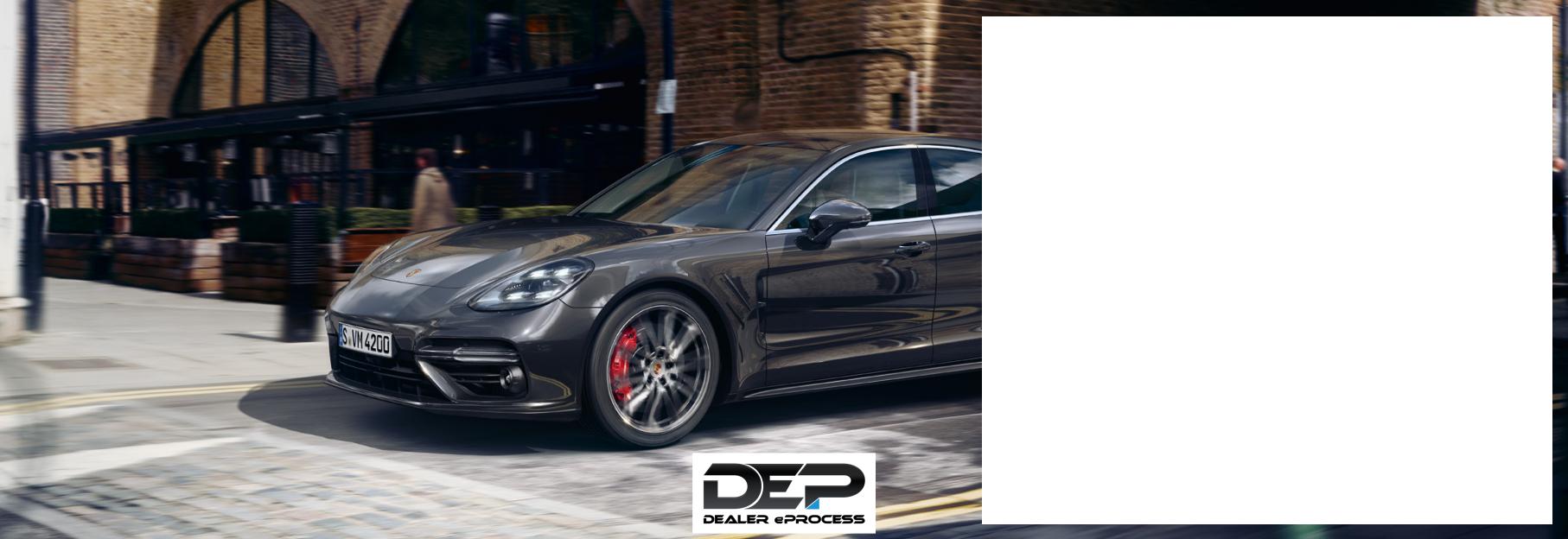
Porsche Active Suspension Management (PASM).
PASM is an electronic damping control system. It actively and continuously adjusts the damping force on each wheel, based on current road conditions and driving style. The effect is to reduce vehicle body movement and thereby improve comfort in all four seats.
Three modes are available: ‘Normal’, ‘SPORT’ and ‘SPORT PLUS’. Sensors record the body movements as they occur during powerful acceleration, braking, fast cornering or on uneven road surfaces. From these data, the control unit of the Porsche 4D Chassis Control system determines the effect on the actual driving state of the car and modifies the damping force on each of the wheels in accordance with the selected mode. The results are tangible: increased driving stability, improved comfort and enhanced performance.
Porsche Dynamic Chassis Control Sport (PDCC Sport) including Porsche Torque Vectoring Plus (PTV Plus).
New Porsche Dynamic Chassis Control Sport (PDCC Sport) is an active roll stabilisation system with an ultra sporty setup. It registers the lateral inclination of the body induced by cornering from the very outset and acts to suppress it. The system also reduces the lateral instability of the vehicle on uneven ground.
The new system sees the introduction of active electromechanical anti-roll bars. These provide a much faster response and are tuned for sporty driving. The result: improved performance.
In combination with new PDCC Sport, PTV Plus enhances driving dynamics and stability. As a function of steering angle and steering speed, accelerator pedal position, yaw rate and vehicle speed,
it improves steering response and
precision by strategic braking of the right or left rear wheel. At high speeds and when accelerating out of corners, the electronically controlled rear differential lock with fully variable torque distribution also acts to provide greater driving stability and traction.
The overall result? Strong resistance to destabilising side forces for self-assured poise. Excellent traction. Great agility at every speed – with precise turn-in and well-balanced load transfer characteristics. And, accordingly,
even more fun in the corners.
Drive and chassis 43
